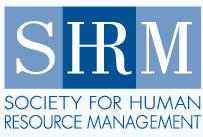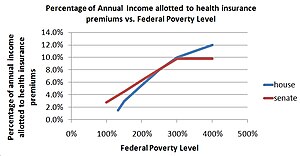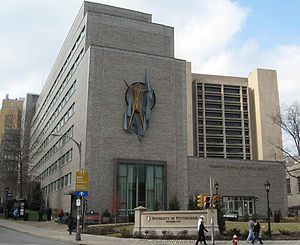CFO Magazine – June 2012
Russ Banham
The coming retirement of the baby boomers could leave businesses short of critical knowledge and skills. Make sure that doesn’t happen to your company.
Thanks to its sheer size, the
baby-boom generation has had an enormous impact on society and the economy at every stage of its development. The present time is no exception, as Americans born between 1946 and 1964, currently accounting for one-third of the workforce, begin to enter their golden years. Many boomers are postponing retirement… But many others are ready to retire, and sooner or later, the boomers will be leaving the workplace in droves.
When they do, employers face the loss of all that experience, all that institutional and subject-matter knowledge and expertise.
“Everyone knew that boomers were getting older and would soon be retiring, but when the financial crisis hit and many stayed on, companies sort of postponed their reactions,” says Colleen O’Neill, talent management leader for North America at Mercer, the human-resources consulting firm. “Now boomers are leaving, thanks to rising 401(k) values, and it’s time to take action.”
Many companies are just catching on to the impending exodus. Some are bringing in consultants to ferret out the skill-set gaps that will materialize. Others are developing knowledge-transfer and mentoring programs to get younger workers up to speed. Still other companies are creating flexible work environments where cash-strapped boomers can return to work on a part-time or project basis.
 |
| Society for Human Resource Management (Photo credit: Wikipedia) |
For some employers, boomers waving good-bye to the office is good news, given their generally higher pay and benefits. But the loss of human and knowledge capital is potentially dire for the bulk of organizations in industries like manufacturing, technology, engineering, and accounting. According to a recent poll of employers conducted by the AARP and the
Society for Human Resource Management, 72% of HR managers stated that the loss of talented older workers was “a problem” or “a potential problem.”
… “Organizations are running much leaner than ever before, and there are not a lot of extra people to pick up the slack when someone exits,” says Jackie Greaner, talent management and organization alignment practice leader for North America at human-resources consultancy Towers Watson. “Companies need to do a better job of identifying critical skills and planning for their inevitable loss.”
The Knowledge Checklist
Approximately 4.6 American adults will turn 65 every minute of 2012, and by 2015 that number will increase, to 8, according to the U.S. Census Bureau. …
The first order of business is to get the facts straight by determining the organization’s skill sets, and a good way to start is by assessing which people are truly strategic. “Some skills you can fill easily,” says O’Neill. “It’s the singular, hard-to- find skills that take a while to replace that create risk.”
Lockheed Martin Space Systems instituted a project 10 years ago to identify and assess employees’ skills to prepare for future voids in intellectual capabilities. “We realized we had senior people who were very technically expert in our complex systems, were known to our customers, and would be eligible to retire in a few years,” recalls Tory Bruno, president of Lockheed Martin’s strategic and missile defense systems unit. “We needed to identify this knowledge and find ways to successfully transfer it.”
Bruno’s unit began by identifying critical skills needed by the business, and going through a detailed interview process to understand what it was that made certain employees experts. …
Armed with this data, Lockheed Martin now teaches advanced skills to less-experienced employees through its Critical Skills Management Program. The program pairs up a junior employee with an expert, who becomes his or her mentor. A member of the management team, typically the manager of the junior employee, is part of the equation, planning and arranging assignments for the protégé to absorb the required knowledge. … [Bruno explains, ]“The respective tasks in the process become part of each employee’s performance review,” … “At the end of the process, we have a graduation ceremony, where the protégé is certified as an expert by the mentor and manager.”
Corey Leal, director of finance in Bruno’s operating unit, says the program has significant financial value. “Assuring that our technical employees have the expertise needed to support our core competencies means less reliance on subcontractors and, ultimately, greater profitability for our business,” he says.
Accelerated Learning
For some companies, traditional mentoring processes may not work quickly enough. “Seven years to transfer rare skills may be too long,” says Mercer’s O’Neill. “But if you can create ways to accelerate this to two or three years using software and scenario- planning tools, you will be ahead of the eight ball.”
 |
| CHARLOTTE, NC - JANUARY 10: A man walks out of the Duke Energy Center at 550 South Tryon St., one of two buildings that house Duke Energy's headquarters January 10, 2011 in Charlotte, North Carolina. (Image credit: Getty Images via @daylife) |
Duke Energy, for one, used a software tool to pass on institutional knowledge. “We had lots of manuals, drawings, and other informational assets about our existing power stations and brand-new ones, but what we lacked was the human element, which wasn’t included in these documents,” says Arnold Fry, manager of substation engineering standards and power delivery engineering at the Charlotte, North Carolina– based electric utility.
Duke Energy scheduled a series of interviews with senior engineers, in which questions were asked about their functions. The responses were then digitized using the software tool. “In the old days, a younger worker would shadow an older one, …,” says Fry. “This type of mentoring is fine when you have the time, but now there are too many older workers ready to retire, and far fewer younger ones to come up the ranks.
“Now when people retire, their experience is preserved and can be passed on to future generations,” says Fry. “And you are able to access knowledge from multiple people.”
The need to compress the training time frame is critical in the electric power industry. “According to a recent report by the IEEE Power and Engineering Society, 51% of electric power engineers will be eligible to retire by 2014,” says Geoff Zeiss, director of the utility industry program at software-maker Autodesk. “Utilities are losing experienced workers and are having a tough time replacing them with younger workers. This elevates knowledge transfer to a strategic necessity.”
Out and Still About
Another way to bridge the skills gap is to hire boomers who have retired from their old jobs but still want to work. “Almost half of adults aged 65 to 69 receive wages, salaries, or income from self-employment,” points out Samantha Greenfield, employer engagement specialist at The Sloan Center on Aging &Work.
… Many have joined organizations that provide skilled workers to companies needing them on a part-time or even full-time basis. The National Older Worker Career Center, for instance, specializes in recruiting and providing skilled engineers, scientists, technicians, and other professionals for the
U.S. Department of Agriculture and the Environmental Protection Agency. “We’re an executive search firm, except these executives are in their 60s, 70s, and older,” says Joel Reaser, NOWCC senior vice president. “… Our oldest, at 92, just retired for good this time.”
Reaser says the steady exit of baby boomers from the workforce is having an adverse effect on the federal government, which can’t find enough younger talent to pick up the slack. The solution is to recruit and employ experienced retired people until younger workers get up to speed. “Organizations are not going to have an option about whether or not to hire older workers—the demographics insist on it,” says Reaser, who is 72. “This isn’t, ‘Let’s hire older people because they’re nice to have around.’ There are few other choices.”
 |
| A few issues of SHRM's monthly publication HR Magazine. (Photo credit: Wikipedia) |
Employers will have to adapt to an older cohort of workers, says Reaser. “Just like the accommodations that were made when women entered the workforce in large numbers a generation ago, …,” he says. “These include preventive health care and health maintenance, flexible work arrangements, and valuing ‘power naps’ in the middle of the day.”
Yoh, another staffing agency, also specializes in providing seasoned workers as short- and long-term temporary workers, in its case to the telecom, technology, aerospace, life sciences, and entertainment industries. “Companies are looking for highly technical legacy experience as much as they want younger people with cutting-edge technology skills,” says Matt Rivera, Yoh’s director of customer solutions. …
 |
| The Human Resources Manager (Photo credit: Wikipedia) |
One novel staffing resource is work campers—retirees with specialized skills who travel from city to city in recreational vehicles to fill in where they are needed. “These are sought-after workers for ‘bridge’ assignments,” says Joan Davison, president and COO of Staff Management SMX, a managed staffing and recruiting services provider based in Chicago. “They have exited the workforce, but they still want that feeling of engagement, in addition to the extra income. If they live in Minnesota, they might be enticed to spend the winter in Southern California for two months in a technical capacity.” …
O’Neill points out that many companies are forming retiree networks internally. “A lot of technology firms are creating these affiliate networks, where they take a cadre of recent retirees and bring them in on consulting assignments,” she explains. “We’re actually thinking of something similar here at Mercer. We have a whole category of people who are going to leave the business, and we’re investigating the idea of them coming back part-time as consultants in a more systematic way.”
The Fourth Generation
Adding a fourth generation to the work environment is a good thing, contends Rivera. “The composition of the workforce is changing out of necessity,” he says. “If you’re going to be competitive today, you have to appreciate the generational differences. Young people—the millennial generation—are looking for openness, transparency, and a sense of meaning in employment, whereas pre-boomers and boomers seek ways to spread their knowledge. Blending this is the real trick.” (See “Bridging Generation Gaps,” ...)
… Many businesses with benefit plans stipulate that employees will receive a stated percentage of the highest salary they received in the five years before their retirement, Reaser notes. “If they stay on in some capacity at lower annual compensation, they run into the risk of a lower pension,” he says. “Obviously, the rules need to change.”
Changing such rules and providing flexible work arrangements for older workers serve yet another purpose: helping companies ease high-paid employees out the door. Mercer does this by offering a senior consultant in a leadership role the opportunity to move laterally into a client-facing position at lower pay. “This only works if you have the right conversation with the older worker, affirming that he or she still has a place in which to contribute,” O’Neill cautions.
The concept may have appeal to boomers. “There are many boomers who no longer want to work full-time, yet wouldn’t mind moving into an encore career,” says Ted Fishman, author of Shock of Gray, a 2010 book on the aging of the world’s population. Davison concurs. “Corporate America is recognizing that you can’t simply push the workforce out the door anymore—certainly not boomers,” she says. “You need ways of accommodating them.”
Bridging Generation Gaps
connecting workers of all ages can be a challenge
.With many baby boomers and pre-boomers staying on in a variety of roles at their companies, today’s workforce is looking a bit like a family reunion, with as many as four generations sitting at the table engaging in oft-cumbersome conversations.
Getting four generations to agree on anything is difficult, but in the workplace, effective communication and collaboration are imperative. … “Each generation has very distinct methods of communicating,” says Jascha Kaykas-Wolf, chief marketing officer of Mindjet, a maker of collaborative work management software. “For instance, many pre-boomers focus on building personal relationships, [while] many millennials use social collaboration tools like Facebook and Skype to communicate and collaborate. It’s a big struggle to keep all this intellectual capital working together effectively.”
This was the case at California State University in Chico, where, … ages range from professors and administrators nearing age 65 to students still in their teens. The wide difference in ages hindered the university’s ability to create a collaborative working environment in preparing Cal State’s annual town-hall meeting, a oneday event in which students, faculty, administrators and community members gather to hear various speakers discuss public-interest topics.
Thia Wolf, an English professor and director of the university’s first-year experience program, acknowledges that she and her students communicate and work differently. “I’m in my mid-50s and am used to e-mail and faxing in an office environment, whereas they are communicating using smartphones and social media on the go,” she says. “In putting together the town hall, they rebelled against me drawing up diagrams of the seating arrangements, … which I planned to fax or scan and e-mail. That was too long and inefficient, they argued.”
The university tapped a Mindjet product called Mindjet Connect to bridge the generation gap. The software uses brainstorming and task management capabilities as well as social media and integrated online sources in the cloud like Google and Twitter to capture, organize, and communicate information. This allows a multigenerational team to plan and stay current on a project, no matter what devices they use. So, for example, Wolf stays connected via her desktop with students who collaborate using their smartphones.
Banking giant Wells Fargo is … piloting a master’s-level certificate program that pairs up members of its Boomers Connection network with its Young Professionals network in Minnesota. Graduates receive an MA in organizational leadership certificate from St. Catherine’s University in St. Paul/Minneapolis.
“The goal is to get older people to work alongside younger people who work very differently than they do, and vice versa, to appreciate each other’s learning and work styles,” says Philomena Morrissey Satre, vice president of diversity and inclusion for the bank’s Mountain Midwest region. This year’s graduating class of 12 includes seasoned banking executives as well as newer hires. ◗ R.B.

![Memphis Skyline HDR [Reinhard]](http://farm3.static.flickr.com/2328/2041115773_ebbea9470e_m.jpg)











































